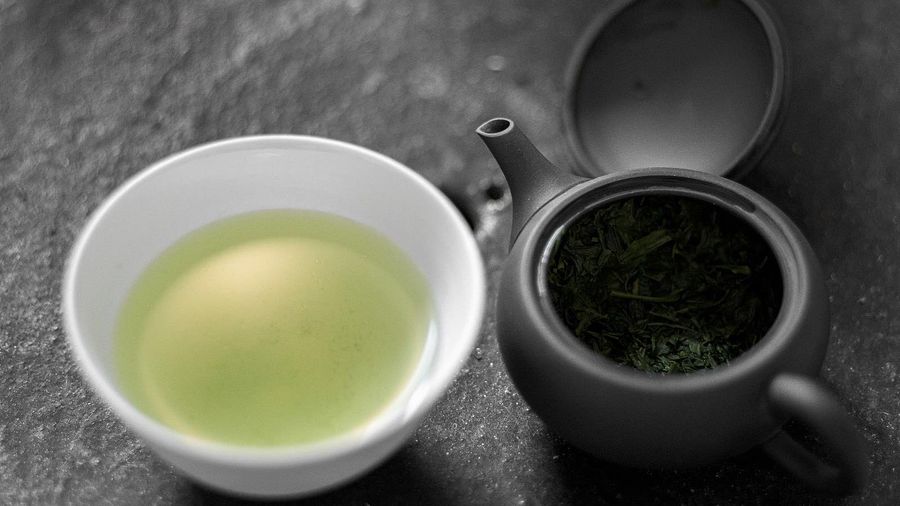· teas · 4 min read
Learn about the Shade-Grown Japanese Tea with a Sweet and Mellow Flavor
Gyokuro, a shade-grown Japanese tea, offers a unique tea-drinking experience with its sweet and mellow flavor.

When it comes to Japanese green teas, Gyokuro stands in a league of its own. With its vibrant green color, delicate aroma, and distinctive flavor profile, Gyokuro offers a unique tea-drinking experience that captivates tea enthusiasts around the world. In this blog, we will take a deep dive into the world of Gyokuro, exploring its origins, cultivation process, flavor characteristics, and the numerous reasons why it is cherished by tea connoisseurs.
Origins and Cultivation
Gyokuro traces its origins back to Japan, where it is grown and produced with meticulous care. What sets Gyokuro apart from other green teas is its shade-grown cultivation method. The tea plants are shielded from direct sunlight for several weeks before harvesting, which enhances the tea’s flavor and promotes the development of amino acids and chlorophyll. This labor-intensive process produces tea leaves with a unique and distinct character.
Flavor Profile
One of the defining features of Gyokuro is its sweet and mellow flavor. The shading process reduces the bitterness and astringency often associated with other green teas, resulting in a smoother and more umami-rich taste. Gyokuro is known for its savory notes, with hints of seaweed and steamed vegetables. The infusion has a light, buttery texture and a lingering sweetness that leaves a pleasant aftertaste on the palate.
Health Benefits
Like other green teas, Gyokuro offers a range of health benefits. It is rich in antioxidants, which help protect the body against free radicals and support overall well-being. The tea contains catechins, specifically epigallocatechin gallate (EGCG), known for its potential anticancer properties and metabolism-boosting effects. Additionally, Gyokuro is believed to promote relaxation and mental clarity, making it a popular choice for tea meditation and mindfulness practices.
Brewing and Appreciation
To fully appreciate the flavors and nuances of Gyokuro, precise brewing is key. The tea is best brewed at a lower water temperature, around 140°F (60°C), for a shorter steeping time of 1-2 minutes. This allows the tea to infuse gently and extract its delicate flavors without becoming bitter. The resulting cup of Gyokuro is a vibrant green infusion with a captivating aroma. Take the time to savor each sip, allowing the flavors to unfold on your palate and immersing yourself in the tranquility it brings.
Incorporating Gyokuro into Your Tea Ritual
Gyokuro’s unique character makes it an excellent choice for a tea ritual. Its sweet and mellow flavors pair well with moments of reflection and relaxation. Consider incorporating Gyokuro into your daily tea practice, such as an afternoon tea break. Allow the tea to become a moment of tranquility and appreciation, letting its flavors and aroma transport you to the serene tea gardens of Japan.
Gyokuro is a tea like no other, with its shade-grown cultivation and sweet, mellow flavors. This beloved Japanese green tea offers a sensory experience that is both captivating and serene. Delve into the world of Gyokuro and discover the pleasure of its delicate flavors and the tranquility it brings to your tea-drinking ritual.
FAQS
What is the significance of the shading process in Gyokuro production?
The shading process plays a crucial role in the development of Gyokuro’s unique flavor. By blocking sunlight, the tea leaves produce more chlorophyll and amino acids, resulting in a sweeter and less astringent taste.
How long is the shading period for Gyokuro?
The shading period for Gyokuro typically lasts around 20 days, although some variations may have shorter or longer shading periods depending on the desired flavor profile.
Is Gyokuro more expensive than other green teas?
Yes, Gyokuro is generally considered a premium green tea and tends to be more expensive compared to other varieties. This is due to the labor-intensive shading process and the limited availability of high-quality Gyokuro leaves.
Can Gyokuro be steeped multiple times?
Yes, Gyokuro is known for its ability to be steeped multiple times. Each steeping brings out different nuances of flavor, allowing tea enthusiasts to enjoy a more complex and evolving taste experience.
Are there different grades of Gyokuro?
Yes, Gyokuro is graded based on various factors such as leaf quality, aroma, and taste. Higher grades are often more expensive and offer a more refined flavor profile.
Can Gyokuro be enjoyed iced or cold-brewed?
While traditionally Gyokuro is enjoyed hot, some people do enjoy it iced or cold-brewed. Cold-brewing can result in a sweeter and more delicate flavor profile, offering a refreshing alternative during warmer months.
Does Gyokuro contain caffeine?
Yes, like other green teas, Gyokuro contains caffeine. However, the caffeine content is generally lower compared to coffee and black tea. If you are sensitive to caffeine, you may opt for lower temperature and shorter steeping times to reduce its concentration.
Can Gyokuro be used in cooking or baking?
While Gyokuro is primarily enjoyed as a beverage, some culinary enthusiasts experiment with using it in cooking and baking. It can add a subtle and unique flavor to various recipes, such as ice cream, desserts, or savory dishes.